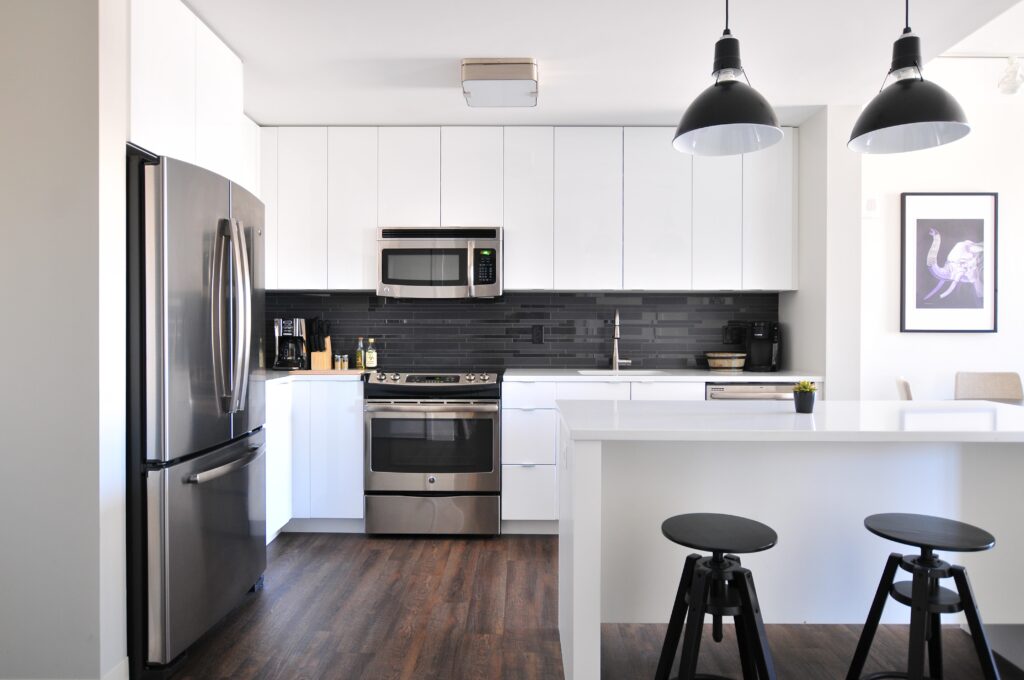If you’re contemplating using a 30 amp generator to power your house, you may be wondering if it’s up to the task. In this article, we’ll explore whether a 30 amp generator has the capability to meet the energy demands of an entire household. Discover the factors to consider and find out if this compact power source can effectively keep your lights on, appliances running, and ensure your comfort during unexpected power outages.

Understanding Power and Amps
Definition of power and amps
Power refers to the rate at which energy is consumed or generated. In electrical terms, power is measured in watts (W) and it represents the amount of work done or energy transferred per unit time. Amps, on the other hand, are a unit of electric current and they measure the flow of electricity through a conductor. Amps are denoted by the symbol ‘A’ and they represent the quantity or volume of electricity flowing through a circuit.
The relation between power and amps
Power and amps are closely related but they are not the same thing. The relationship between power and amps can be understood through Ohm’s Law, which states that the current flowing through a conductor is directly proportional to the voltage across it, and inversely proportional to the resistance of the conductor. In simple terms, to calculate power (in watts), you need to multiply the current (in amps) by the voltage (in volts).
How power demand influences generator choice
power demand is an important factor to consider when choosing a generator for your house. The power demand of your appliances and electrical systems will determine the size and capacity of the generator you need. If the power demand exceeds the capacity of a generator, it may not be able to supply enough electricity to run all your appliances simultaneously. Therefore, understanding your power demand is crucial in selecting the right generator for your needs.
What is a 30 Amp Generator?
General overview of a 30 amp generator
A 30 amp generator is a portable power source that is capable of supplying up to 30 amps of electricity. It is designed to provide sufficient power for a range of applications, including powering small to medium-sized appliances and electrical devices. This type of generator is commonly used for recreational purposes, camping trips, and as a backup power source during power outages.
Typical uses of a 30 amp generator
A 30 amp generator can be used to power a variety of appliances and equipment. It can easily handle the power requirements of common household appliances such as refrigerators, air conditioners, lights, televisions, and small kitchen appliances. Additionally, it can also power tools, laptops, chargers, and other electronic devices commonly used in outdoor activities.
Advantages and disadvantages of using a 30 amp generator
One of the key advantages of using a 30 amp generator is its portability. These generators are relatively compact and lightweight, making them easy to transport and store. They also provide enough power to run essential appliances during an outage or while enjoying outdoor activities. However, it’s important to note that a 30 amp generator may not be sufficient to power an entire house with heavy power demands. It may struggle to handle high-powered appliances such as central air conditioning systems, electric heating systems, or multiple large appliances running simultaneously.

Energy Requirements of a House
How to calculate energy demand at home
To calculate the energy demand at home, you need to consider the power requirements of all the appliances and electrical systems in your house. Start by making a list of all the appliances you use regularly and note down their power ratings in watts. Then, estimate the average amount of time each appliance is used per day. Multiply the power rating by the usage time to calculate the energy consumption in watt-hours (Wh). Add up the energy consumption of all appliances to determine the total energy demand.
List of common household appliances and their power demand
Household appliances vary in power consumption, and it’s important to understand their individual power demands when calculating energy requirements. Here is a list of common household appliances with their typical power ratings:
- Refrigerator: 100-800 watts
- Air conditioner: 500-3500 watts
- Electric oven: 2000-5000 watts
- Microwave: 600-1500 watts
- Television: 50-400 watts
- Washing machine: 500-2000 watts
- Dishwasher: 1200-2400 watts
- Lights (per bulb): 5-100 watts
How power is distributed in a house
Power in a house is typically distributed through a circuit breaker panel or a fuse box. The main electrical service panel receives power from the utility grid and distributes it to various circuits throughout the house. Each circuit is protected by a circuit breaker or fuse that controls the flow of electricity. The circuits are then connected to outlets, switches, and lighting fixtures, allowing power to be delivered to the respective appliances and devices.
Operating a House with a 30 Amp Generator
General feasibility of running a house with a 30 amp generator
Operating a house with a 30 amp generator is feasible, but it depends on the power demand of your appliances and the capacity of the generator. A 30 amp generator can power essential appliances and devices, but it may not be able to handle heavy power loads or multiple high-powered appliances running simultaneously. It’s important to evaluate the power demand of your house and determine if a 30 amp generator can meet your needs.
Conditions for running a house with this generator
To successfully run a house with a 30 amp generator, you need to prioritize your power usage and avoid overloading the generator. Start by identifying the essential appliances that you cannot do without, such as refrigerators, lights, and communication devices. Use these appliances within the generator’s capacity and avoid using high-power appliances simultaneously. Additionally, manage your energy consumption by turning off unnecessary lights and appliances to maximize the available power.
Caveats and considerations in using a 30 amp generator for homes
While a 30 amp generator can serve as a backup power source for homes, there are some caveats and considerations to keep in mind. First, understand the limitations of the generator and avoid connecting high-powered appliances that exceed its capacity. Additionally, be cautious of the fuel consumption and runtime of the generator, especially during extended power outages. Finally, be aware of electrical safety measures to avoid overloading circuits and causing damage to appliances or the generator itself.

Examples of Appliances a 30 Amp Generator Can Support
Major appliances
A 30 amp generator can support a range of major household appliances, including:
- Refrigerator: Typically, a refrigerator will consume around 100-800 watts, making it well within the capacity of a 30 amp generator.
- Air conditioner: A small window air conditioner unit usually requires around 1000-1500 watts, which can be easily powered by a 30 amp generator.
- Lights: Lighting fixtures consume relatively low power, usually between 5-100 watts each, allowing a 30 amp generator to handle multiple bulbs without issue.
Small appliances
A 30 amp generator can also power a variety of small household appliances, such as:
- Television: Televisions typically require around 50-400 watts, depending on the size and type of the TV.
- Laptop: Laptops and other electronic devices generally consume 50-100 watts, making them suitable for use with a 30 amp generator.
- Chargers: Mobile phone chargers and other small chargers usually have power ratings of around 5-20 watts, well within the generator’s capacity.
Number of appliances at any given time
The number of appliances a 30 amp generator can support simultaneously depends on their power ratings and the generator’s capacity. For example, if you have a 30 amp generator with a maximum power output of 3600 watts (30 amps x 120 volts), you could run multiple appliances as long as their combined power requirements do not exceed 3600 watts. It’s important to carefully calculate the power demands of all appliances and ensure that the total does not exceed the generator’s capacity.
Setting Up a 30 Amp Generator for Home Use
Required equipment
When setting up a 30 amp generator for home use, you will need the following equipment:
- 30 amp generator: A reliable and appropriately rated generator capable of supplying 30 amps of electricity.
- Power transfer switch: A transfer switch allows you to safely connect the generator to the main electrical panel and transfer power between the generator and the utility grid.
- Cords and connectors: High-quality extension cords and connectors designed for the generator’s power output to safely distribute power to appliances and devices.
- Fuel storage and supply: Adequate fuel storage containers and a safe supply of fuel to ensure the generator can run for extended periods.
- Surge protectors: Surge protectors are essential for safeguarding appliances and devices from power surges and fluctuations.
Steps in setting up the generator
- Determine the ideal location: Choose a well-ventilated and dry location for the generator. Ensure there is enough space for proper airflow and safe operation.
- Install the transfer switch: Consult a licensed electrician to properly install the transfer switch, ensuring it is connected to the main electrical panel and wired correctly.
- Connect the generator: Use appropriately rated cords and connectors to connect the generator to the transfer switch or directly to appliances, according to the manufacturer’s instructions.
- Fuel and start the generator: Fill the generator with the recommended fuel and start it following the manufacturer’s instructions.
- Test and distribute power: Test the generator by turning on essential appliances and ensuring they receive power. Use surge protectors and power strips for additional outlet options when distributing power to multiple devices.
Safety measures for generator installation
Safety is paramount when installing a generator for home use. Here are some important safety measures to consider:
- Never operate a generator indoors or in an enclosed space to prevent carbon monoxide poisoning.
- Keep the generator away from open windows, vents, or areas where exhaust fumes can enter the house.
- Ensure proper grounding for the generator to prevent electrical hazards.
- Use only high-quality cords and connectors designed for the generator’s power output to avoid overheating and electrical fires.
- Regularly inspect and maintain the generator to ensure safe and reliable operation.
- Consult a licensed electrician for professional installation and to ensure compliance with local electrical codes.
Limitations of a 30 Amp Generator
Energy consumption considerations
One limitation of a 30 amp generator is its limited energy output. The total amount of energy it can generate is determined by its power output and the duration it can run. Therefore, if your power demand exceeds the generator’s capacity, it may not be able to supply enough energy to run all your appliances continuously.
Appliances that it cannot support
A 30 amp generator may not be able to support high-powered appliances such as electric ovens, electric water heaters, or central air conditioning systems that have significantly higher power requirements. These appliances may exceed the generator’s capacity and cause overloading or damage to the generator itself.
Limitations during emergency situations
While a 30 amp generator can provide temporary power during emergencies or power outages, it may not be able to sustain continuous operation for an extended period. Depending on the size of the generator’s fuel tank and its fuel efficiency, you may need to periodically refuel the generator, which may result in temporary interruptions in power supply.
30 Amp Generator vs. Higher Capacity Generators
Comparative performance
Compared to higher capacity generators, a 30 amp generator has limited power output. Higher capacity generators, such as those rated at 50 amps or more, can handle heavier power loads and support running more appliances simultaneously. They are better suited for larger homes with higher power demands or situations where more appliances need to be powered.
Cost differences
Generally, higher capacity generators come with a higher price tag due to their increased power output. A 30 amp generator tends to be more affordable and cost-effective for households with moderate power requirements. However, it’s important to consider the specific power demands of your home and balance it with your budget when deciding on the right generator.
Utility in different situations
A 30 amp generator is well-suited for recreational use, camping trips, and as a backup power source for smaller homes or fewer appliances. It provides enough power to run essential appliances and electrical devices during temporary power outages. Higher capacity generators, on the other hand, are better suited for larger homes or situations where a higher number of appliances need to be powered continuously.
Tips on Efficient Use of a 30 Amp Generator
Effective managing of power usage
To efficiently use a 30 amp generator, practice effective power management by prioritizing essential appliances and spreading out their usage. Avoid running high-power appliances simultaneously to prevent overloading the generator. Regularly monitor power usage and turn off unnecessary appliances and lights to conserve power and extend the generator’s runtime.
Regular maintenance tips
Regular maintenance is essential to ensure the proper functioning and longevity of a 30 amp generator. Here are some maintenance tips to consider:
- Regularly check and change the generator’s oil, air filter, and spark plug as recommended by the manufacturer.
- Keep the generator clean and free from debris to prevent overheating.
- Test the generator periodically to ensure it starts easily and operates smoothly.
- Store the generator in a cool and dry location when not in use.
- Consult the manufacturer’s manual for specific maintenance guidelines.
Maximizing the lifespan of a 30 amp generator
To maximize the lifespan of a 30 amp generator, follow these tips:
- Use the generator with loads within its specified capacity to prevent overloading and excessive wear.
- Provide regular maintenance as outlined by the manufacturer to keep the generator in optimal condition.
- Store the generator in a clean and dry place to protect it from environmental elements.
- Avoid running the generator for extended periods without breaks to prevent overheating.
- Follow safety guidelines and operate the generator according to the manufacturer’s instructions.
Conclusions: Is a 30 Amp Generator Enough?
Final thoughts on using a 30 amp generator for a house
A 30 amp generator can provide sufficient power for a range of household appliances and electrical devices, making it suitable for backup power during short-term outages or recreational activities. However, its limited power output may not be enough to sustain heavy power loads or multiple high-powered appliances running simultaneously in larger homes.
Who should consider buying a 30 amp generator
A 30 amp generator is a good choice for individuals or families with moderate power demands, smaller homes, or those looking for a portable power source for outdoor activities. It can effectively power essential appliances and devices, making it a practical investment for occasional use or as a backup during emergencies.
What to do if a 30 amp generator is not enough
If a 30 amp generator is not enough to meet your power needs, consider upgrading to a higher capacity generator that can handle larger power loads and support additional appliances. Consult with a professional electrician to evaluate your power requirements and recommend the most suitable generator for your household. Additionally, exploring energy-efficient alternatives for certain appliances can help reduce power consumption and make a 30 amp generator more feasible.




